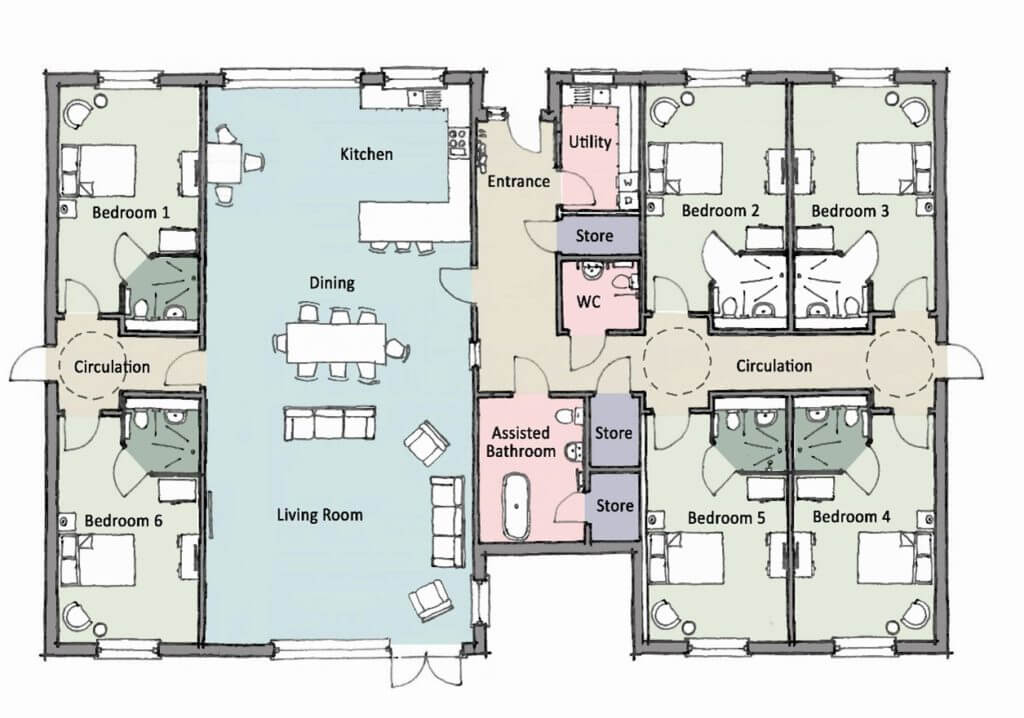Household Care Model
Substituting institutional design for smaller, typically domestic forms can create a more familiar setting which fosters a stronger sense of homeliness and encourages independence. This sense of normality, supported by the functionality of a specialist care home, provides residents with a home which can reduce levels of anxiety, confusion and distress, while providing high levels of support to suit resident’s needs. .
Typically, a standard model of care provides large care groups ranging from ten to twenty bedrooms. While benefiting from efficiencies of scale and staffing, these groups risk feeling institutional and can feel a world away from the daily life new residents enjoyed before their care needs required them to move into a dedicated care environment.
The household model has been introduced in a number of countries. Typically, each household provides a home for six to seven residents, supported by regular carers who effectively live with the residents during the day, supporting them with normal daily tasks.
This reduced number of residents encourages a stronger sense of homeliness and community.






